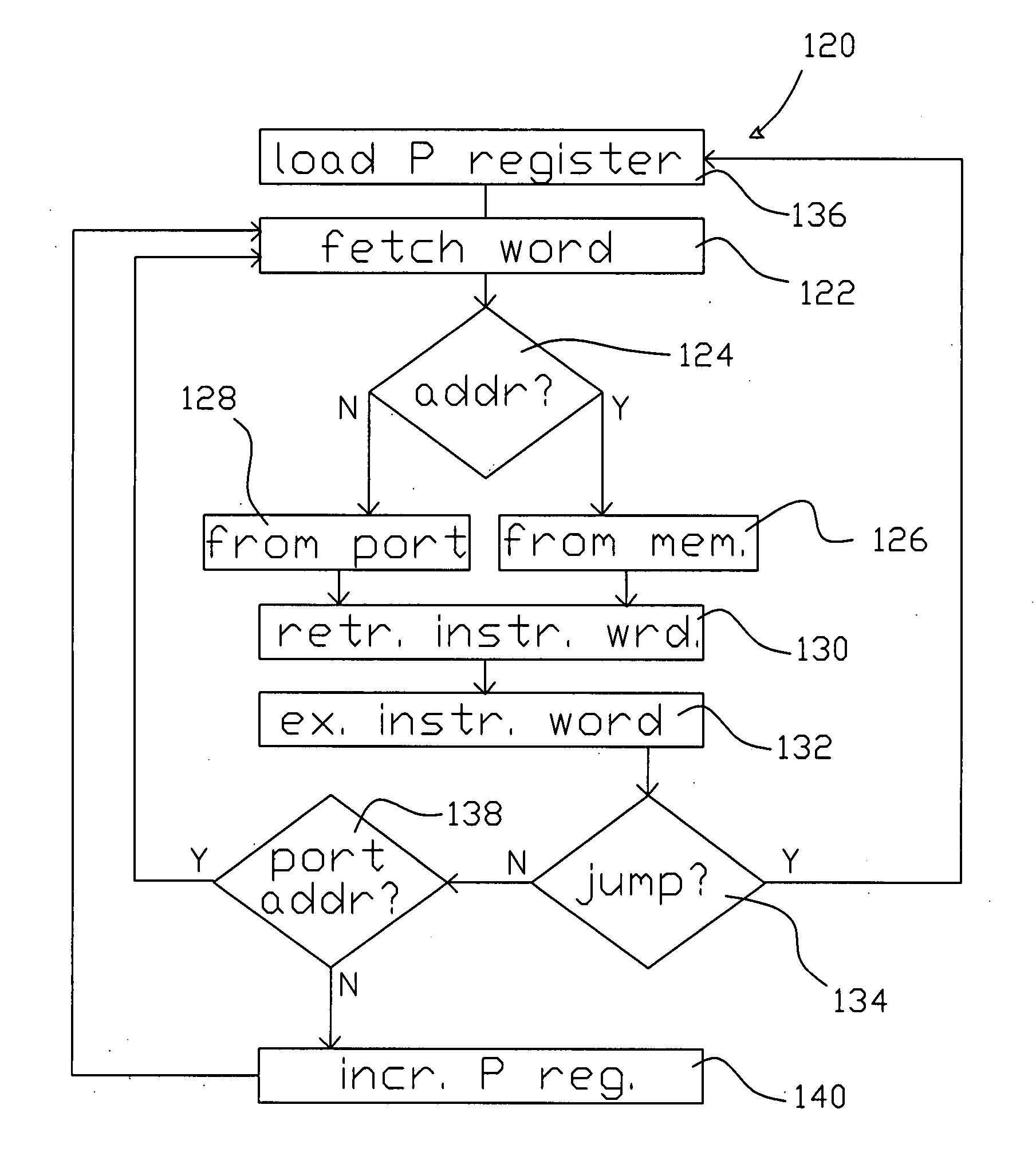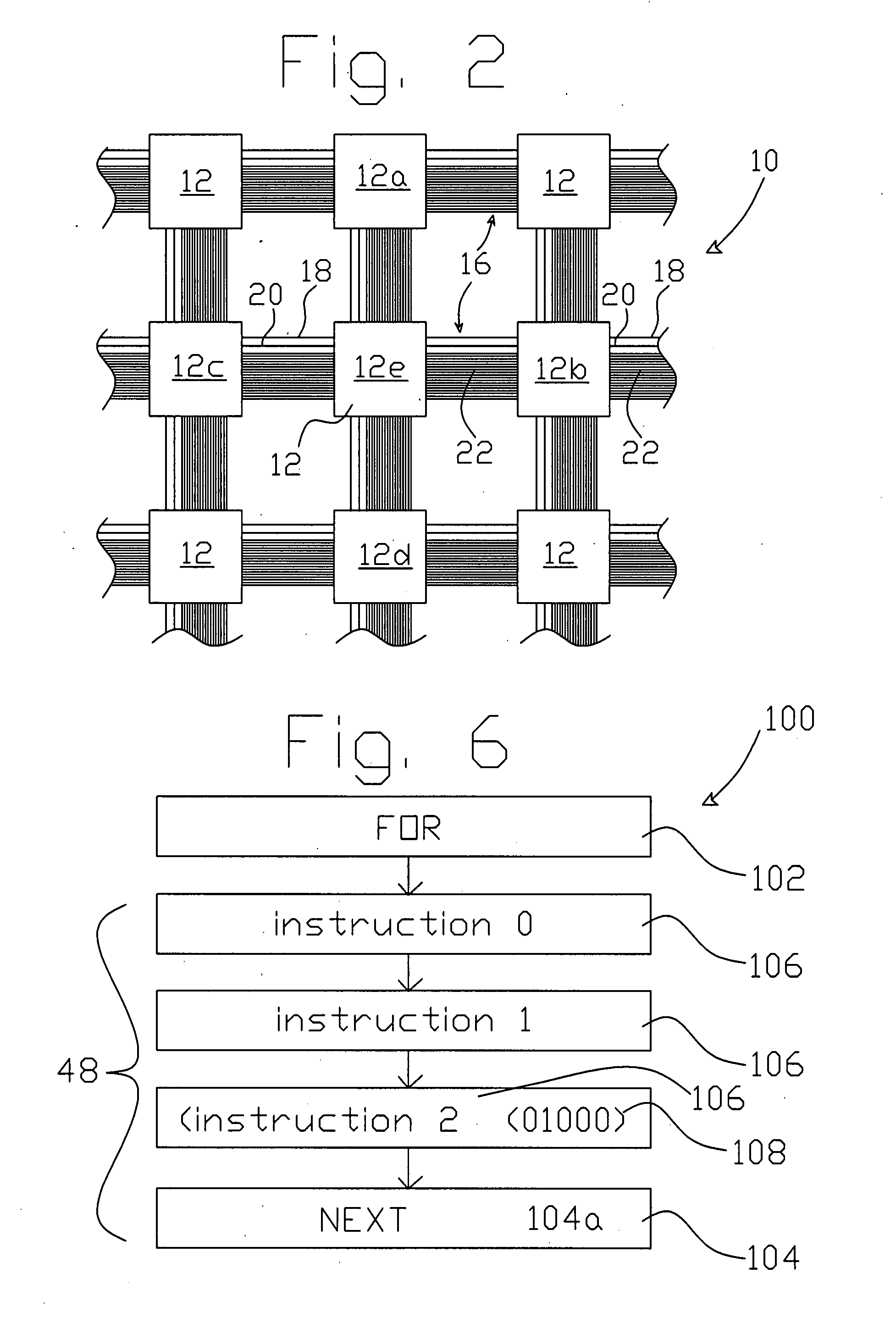Method and apparatus for operating a computer processor array
a computer processor and array technology, applied in the field of computers and computer processors, can solve the problems of accelerating the problem, and reducing the complexity of the overall system, so as to achieve a staggering effect on performan
- Summary
- Abstract
- Description
- Claims
- Application Information
AI Technical Summary
Benefits of technology
Problems solved by technology
Method used
Image
Examples
example 1
[0105]
targetForthlet port-forthlet!p+ !p+ @p+ @p+Fend
[0106] The first line sets up the environment, and the second line declares the program name as port-forthlet. The third line sends the top two stack items to the port this is running on, then reads two stack items back from that port. The forthlet then goes back to sleep on the port waiting for someone to write the next Forthlet to this port. The final line wraps up the Forthlet and puts it on the server so that name port-forthlet returns the address of that packet.
[0107] When a call is made from a port, the address in the PC will be the port. Port addresses don't get auto-incremented. Instead, they wait for some other processor to rewrite the port. The address doesn't increment. The same port address is read again and the processor goes to sleep until the port is written. So, if code running in a port calls a different port or calls RAM or ROM, then the return address of the port that makes the call would be placed on the retur...
example 2
[0112]
target$14 org : dosample \ getbit is a routine in ram \ if it hasn't been defined previously \ give the word getbit meaningforthlet call-from-stream[ $12345 ]# dosamplefend
[0113] This example compiles a forthlet called “call-from-stream” it starts with a literal load that when executed will load the literal $12345 into T then call the subroutine called “dosample”. A literal load instruction, a sample, and a call to a subroutine in RAM are wrapped in this forthlet and if written to a node will cause it to execute the load, and perform the call to the routine in RAM. When that routine returns it will return to the port(s) that called it for more code.
[0114] Direct port stream opcode execution, provides access to the 5-bit instructions that represent most of the primitive operations in the Forth language and that are inlined into programs by the compiler. These forthlets are streamed to a processor's communication channel and executed word by word. They do not hav...
example 3
[0116]
targetforthlet ram-based-spi-driver5 node! \ specify this is for node 5 only0 org \ this resides at address 0 on node 5: spi-code ordinary-codefend
[0117] This example specifies a forthlet named “ram-based-spi-driver” that will have code that that will require the pins unique to node 5 and must reside there in use. It is also bound to a specific address as specified by the words defined inside of it. The word “spi-code” will compile a call to address 0. The code will be loaded and executed at address 0 on node 5 when this forthlet is run.
[0118] Streamed Forthlets can include calls to routines in ROM or RAM. The addresses of the routine to be called are generated from their names by the compiler. Routines in RAM must be loaded before they can be called. If a routine in RAM or ROM is called from a port then most likely the processor delivering the instruction stream will offer the next streamed word for execution in the port and go to sleep while the processor is executing the...
PUM
 Login to View More
Login to View More Abstract
Description
Claims
Application Information
 Login to View More
Login to View More - R&D
- Intellectual Property
- Life Sciences
- Materials
- Tech Scout
- Unparalleled Data Quality
- Higher Quality Content
- 60% Fewer Hallucinations
Browse by: Latest US Patents, China's latest patents, Technical Efficacy Thesaurus, Application Domain, Technology Topic, Popular Technical Reports.
© 2025 PatSnap. All rights reserved.Legal|Privacy policy|Modern Slavery Act Transparency Statement|Sitemap|About US| Contact US: help@patsnap.com



